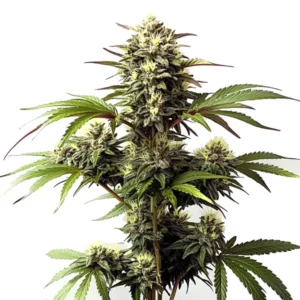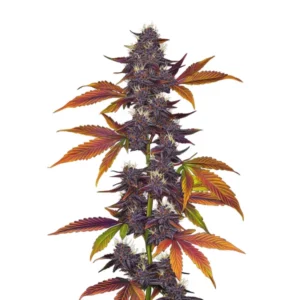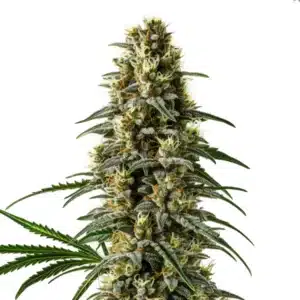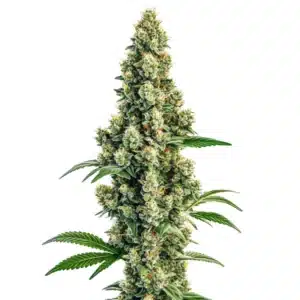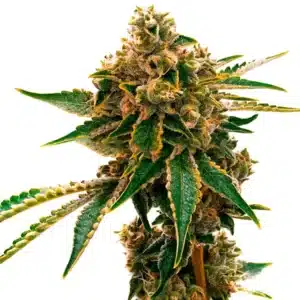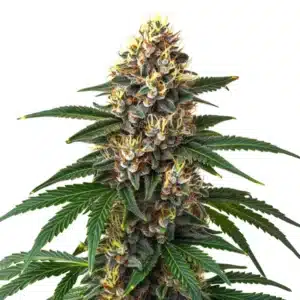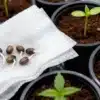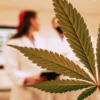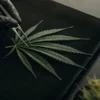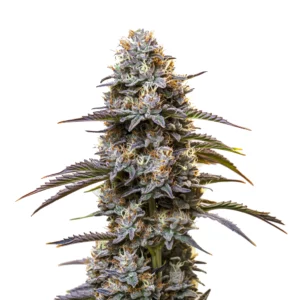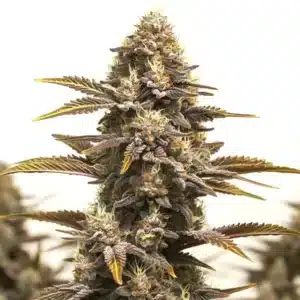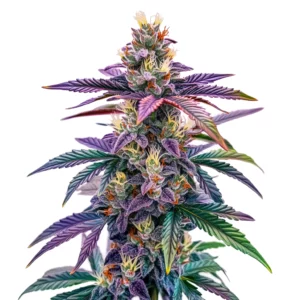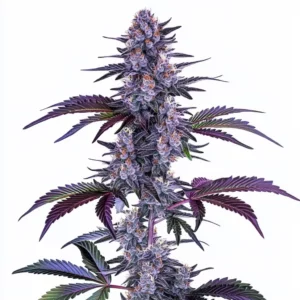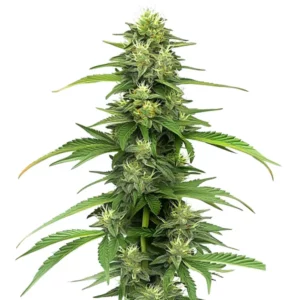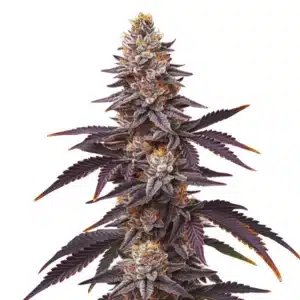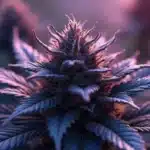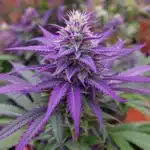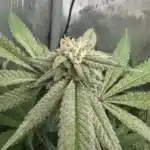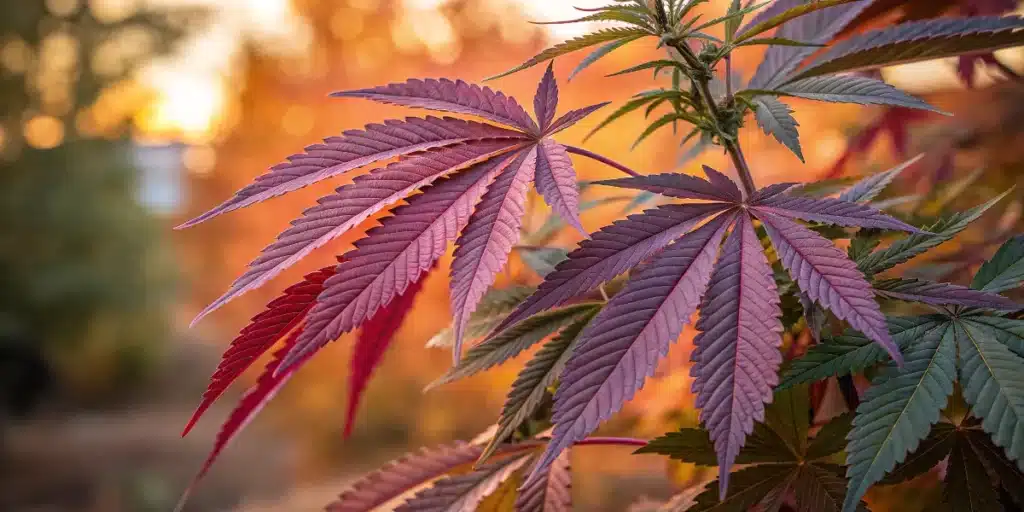
Color Change in Cannabis – How to Induce It
Why Do Cannabis Plants Change Color?
Cannabis is a fascinating plant not just because of its effects, but also due to its diverse appearance. One of the most eye-catching transformations a cannabis plant can undergo is its color change in cannabis. Instead of the standard vibrant green, certain strains can develop hues of purple, red, blue, and even pink or black as they mature, especially during the flowering stage. But what causes this transformation? And more importantly, how can you as a grower intentionally bring it out?
The answer lies primarily in the presence of anthocyanins. These are natural pigments found in many plants, including cannabis. They belong to the flavonoid family and are responsible for giving fruits like blueberries and grapes their iconic coloring. In cannabis, anthocyanins become more prominent under specific environmental and physiological conditions.
Recommended Strains
Alaskan Purple
|
|
THC | 15% - 20% (Medium) |
|
|
Type | Feminized |
|
|
Yield | Medium |
|
|
Phenotype | 70% Indica / 30% Sativa |
Auto Purple CBD
|
|
CBD | 17% – 19% (Medium) |
|
|
Type | CBD Autoflowering |
|
|
Yield | Low |
|
|
Phenotype | 70% Indica / 30% Sativa |
That said, not every cannabis strain will display these vibrant shades. Genetics plays a massive role in determining whether a plant has the potential for color variation. But with the right environment, nutrient strategy, and a few clever tricks, even a mildly colorful strain can express its most vivid side. Let’s break down the factors that influence this color change and how you can use them to your advantage.
Promos & Deals
The Power of Genetics in Color Expression
Genetics form the foundation of any cannabis plant’s potential color palette. Some strains are naturally packed with anthocyanins and will display stunning purples, blues, or even crimson shades without much external coaxing. Varieties like Purple Haze, Granddaddy Purple, or Blue Dream are legendary for this reason. They’re born colorful, and under the right conditions, they truly shine.
Cultivation Tip: While most coloration appears in leaves, branches, and petioles (the tiny stems that attach leaves to branches), it’s much rarer to see strong pigmentation in the actual flowers or buds themselves. This is why even “colorful” strains often still have green colas with flashes of color around the sugar leaves.
When you choose a strain to grow, check whether it has a known reputation for color expression. Breeders often mention this in the strain description. High-anthocyanin strains are your best bet if you’re chasing bold visuals.
Interestingly, these colorful traits often trace back to landrace strains that adapted to specific climates, particularly colder regions. This adaptation enabled them to protect themselves with pigments that absorb light differently and offer resilience against environmental stress. If you’re serious about growing visually striking cannabis, start with the right seeds. The rest environment, nutrients, and stress, can only enhance what genetics allows.
Soil pH and How It Affects Pigmentation
Soil pH is one of the more overlooked aspects when it comes to color change, but it can make a world of difference. Anthocyanins react differently depending on the pH of the surrounding environment. Just like in hydrangeas, Color Change in Cannabis can occur as pigmentation shifts based on how acidic or alkaline your soil is.
Specialist Advice: Aim for a pH of 6.0 to 6.5 for ideal results pH 7 is too high, and color expression (and nutrient absorption) suffers. Even when growing in soil, a slightly acidic range helps bring out visual richness without stressing the plant.
When soil leans toward the acidic side, anthocyanins tend to appear redder. As pH becomes more neutral, you might see more purples, and in slightly alkaline conditions, bluish tones may emerge. Experiment within safe margins and always prioritize plant health.
Nutrients and Stress: How They Affect Color
While proper nutrition is vital for healthy cannabis growth, strategic manipulation of nutrients can also help induce color changes. One of the most effective techniques is slightly lowering phosphorus availability during the late flowering stage. Why phosphorus? Because a minor deficiency encourages the plant to produce more anthocyanins as a stress response resulting in deeper purples and reds.
That said, you don’t want to underfeed your plant entirely. There’s a balance between applying mild stress and causing actual harm. This is where controlled stress comes into play. Some growers with experience in advanced techniques intentionally manipulate environmental conditions, feeding schedules, and watering practices to push plants into producing more pigments. This is not for beginners, but when done properly, the results can be spectacular.
Other stress-based techniques include slightly drying out the plant during the final flush or limiting nitrogen in the last week or two. These methods can boost pigmentation but should be approached with caution. Always monitor how your plant reacts and never stress it to the point where it stops producing resin or developing buds. Controlled stress is a color-enhancing trick not a punishment.
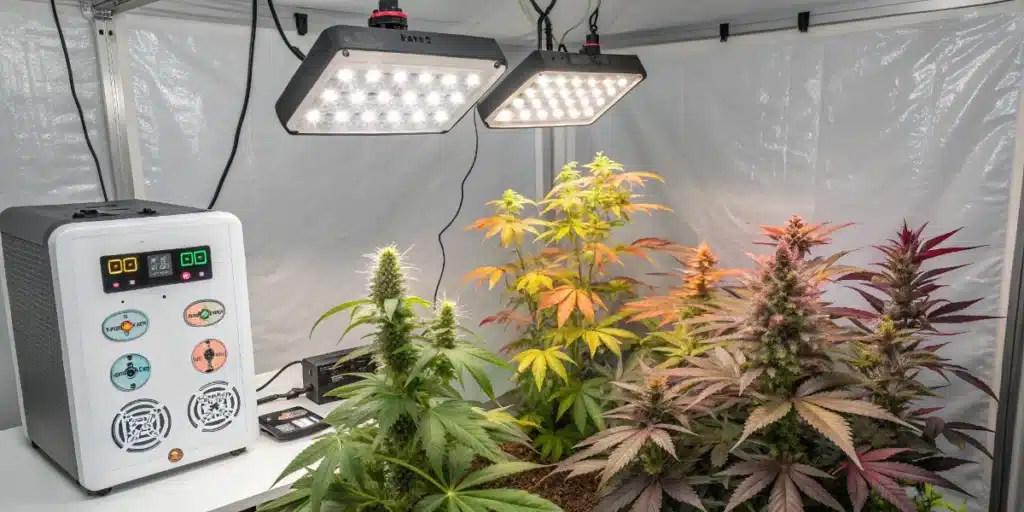
When and How to Lower Temperatures Effectively
Lowering nighttime temperatures is one of the most effective and safe ways to bring out anthocyanin pigments in cannabis. The best time to start this is during the final two to three weeks of flowering.
Aim for a temperature drop of about 10°F (5–7°C) between day and night. For instance, if your daytime temp is 75°F (24°C), try to reach 65°F (18°C) at night.
Reminder: Gradual change is key. Too sharp of a drop can shock your plants. Consistency in timing is more important than how extreme the dip is.
Keep night temps above 55°F (13°C) to avoid stalling growth or harming trichome development.
To drop temperatures indoors without harming your plants:
- Avoid placing plants directly on tile or concrete.
- Use insulated mats under pots to protect roots from cold floors.
- Ventilate cool air from another room or install a programmable mini AC.
The ideal window: last weeks of flowering
Lighting doesn’t just help your plants grow — it can also play a role in Color Change in Cannabis. Anthocyanins absorb light and reflect color depending on genetic traits and environmental conditions, influencing the final appearance of your buds.
High light intensity, particularly during flowering, helps deepen hues in color-prone strains. Full-spectrum LEDs and HID systems can amplify this effect more than low-intensity lighting.
Advanced Tip: If your lights allow spectral tuning, try incorporating small amounts of UV-A or far-red light in the final weeks. These spectrums encourage pigment development and flowering signals, mimicking seasonal changes in nature.
Just don’t overdo it. Too much UV or intense light too close can bleach buds instead of boosting them.
How to drop night temperatures without harming your plants
To manage nighttime temperature drops indoors, consider investing in programmable thermostats, inline fans with timers, and temperature monitoring tools. Dropping temps slowly each night and keeping humidity in check will minimize risk. If your grow tent or room is too small, try ventilating cooler air in from an adjacent room or installing a mini AC unit with a timer function.
Cold air settling at the roots can sometimes cause problems, so avoid placing plants directly on cold concrete or tile. Use insulating mats or elevate pots to prevent shock. When executed properly, controlled temperature dips will enhance coloration while preserving yield and potency.
How Light Exposure Influences Cannabis Color
Lighting is one of the most powerful factors in plant development, and it also plays a direct role in anthocyanin production. Just as light influences chlorophyll activity, it can also stimulate the expression of secondary pigments in cannabis. This stimulation is a key driver behind Color Change in Cannabis, especially during the flowering phase. The more intense the light exposure—particularly during the flowering stage—the more likely the plant is to show its full color potential.
Anthocyanins absorb light in the blue-green spectrum and reflect red, purple, or blue hues depending on the pH and plant genetics. Increasing light intensity won’t create pigments where there are none, but it can definitely make existing colors more vivid. If your plant has the right genetics, you’ll notice deeper shades when grown under high-output lighting systems.
Light intensity and anthocyanin expression
Growers who use full-spectrum LED lights or HID systems often see better color expression than those using low-intensity bulbs. This is because intense light mimics sunlight more effectively and triggers a stronger photosynthetic response. During the final flowering weeks, it’s common practice to slightly reduce the photoperiod to simulate autumn, which can also support deeper color development.
However, be cautious with intensity too much light can bleach your buds or cause light stress. Always keep your canopy at a safe distance from your lamps and gradually increase light levels instead of making abrupt changes. Color will come with time, especially when paired with other techniques like cooler temperatures and nutrient control.
Using UV and LED spectrums to boost pigmentation
Modern grow lights come with a variety of customizable spectrums, and many advanced growers use this to their advantage. Certain UV wavelengths, particularly UV-A, can help activate protective responses in plants one of which includes pigment production. This mimics the plant’s natural behavior under harsh sun exposure in the wild.
Red and far-red spectrums, on the other hand, encourage flowering, which can indirectly support the processes tied to pigmentation. If your grow lights allow spectral tuning, experiment with minor UV exposure during the final few weeks. Just remember that UV is powerful use it sparingly and give your plants time to adapt.
Common Myths About Cannabis Color Change
With the popularity of colorful buds on the rise, misinformation spreads easily. Some growers or consumers believe that purple, red, or blue buds are automatically more potent or of higher quality, but this isn’t always the case. Knowing the color change in cannabis—what causes it and what it truly indicates—can help you separate fact from fiction. Knowing what’s true and what’s hype can help you set the right expectations and grow smarter.
Let’s bust a few of the most common myths surrounding cannabis coloration so that your next grow is based on facts not internet legend.
Do all purple strains mean high potency?
Absolutely not. Color and potency are two separate traits. A purple strain might be highly potent, moderately strong, or even low in THC it depends on the genetics and cultivation conditions. Anthocyanins do not have any psychoactive properties and do not impact cannabinoid levels.
While some strains like Purple Punch or Granddaddy Purple are indeed powerful, their effects come from cannabinoid and terpene profiles not the color of the bud. Don’t assume a strain is “better” just because it’s bright purple. Use lab data or grower reports to judge quality, not just aesthetics.
Is color always a sign of quality?
Not necessarily. While colorful buds can be gorgeous and suggest expert cultivation, green buds can be just as strong or stronger. Some of the world’s most famous strains (like OG Kush or Sour Diesel) are largely green, yet they deliver powerful effects and high yields.
Color should be viewed as an enhancement, not a requirement. If you’re growing for visual appeal or commercial uniqueness, color can be a major selling point. But if your goal is medical efficacy or raw potency, stick to proven strains regardless of hue.
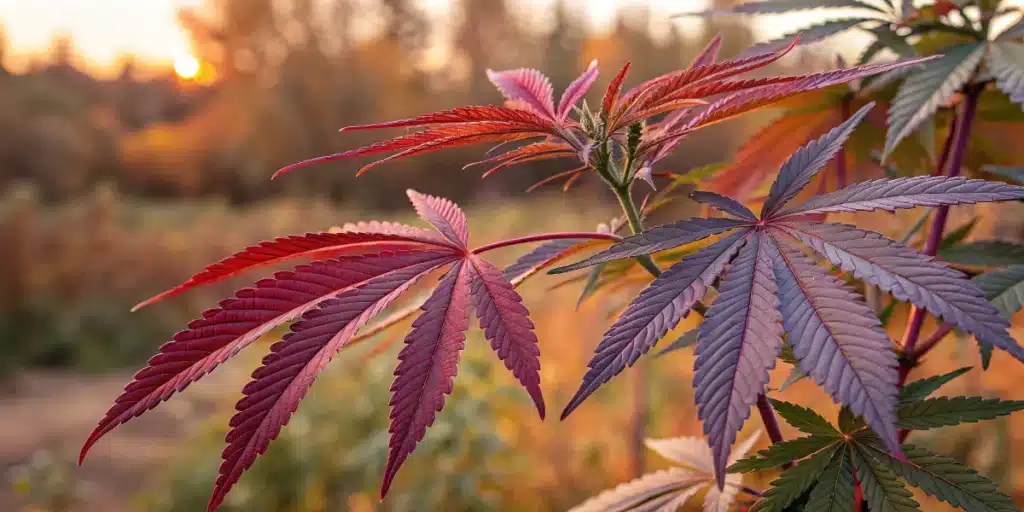
Best Strains for Colorful Buds
If you want guaranteed color, start with the right genetics. There’s no substitute for strains that are naturally rich in anthocyanins. Some breeders focus specifically on developing visually stunning phenotypes that show dramatic purples, blues, reds, or even pinkish hues under the right conditions.
While environmental tweaks help bring out colors, nothing works better than choosing strains that are bred for it. Below are some top picks for vibrant plants you can find on the market, including those available at Blimburn Seeds.
Top purple and blue cannabis strains
Classic purple strains like Granddaddy Purple, Purple Kush, and Purple Haze remain popular for a reason. Their genetics reliably produce deep violet hues with minimal environmental adjustment. Similarly, strains like Blueberry and Blue Dream often show rich bluish tones that stand out beautifully on the branch.
Don’t forget that phenotypes matter too even within a strain, some individual plants will express color more than others. If possible, pop multiple seeds and select the most colorful phenotype for future grows.
Visual Tip: Color tends to appear first in the leaves, petioles, and stems. Buds might change later — or not at all. Don’t judge early let the plant finish.
Colorful strains high in THC or CBD
If you’re seeking visual impact and potent effects, look for strains like Grape Ape or Tropicana Cookies. These offer bold coloration and strong THC levels. On the other hand, if your focus is CBD-rich buds with a colorful twist, strains like CBD Purple Kush Auto can give you therapeutic benefits and aesthetic value in one.
Always check lab reports and breeder descriptions for cannabinoid content, color traits, and flowering behavior. The right combo of color and power makes your garden stand out in every way.
Harvesting and Preserving Colorful Buds
Once your plant reaches full maturity and displays vibrant colors, it’s time to harvest carefully to preserve those hues. Timing is critical. Harvest too early, and buds may not reach their full visual or chemical potential. Wait too long, and trichomes may degrade, or colors might fade as the plant breaks down chlorophyll.
In general, it’s best to harvest when trichomes are mostly cloudy with some amber same as with green buds. But keep an eye on coloration. If purple or red leaves start fading to brown or losing saturation, your window is closing. Use this as a visual cue to act quickly.
Important: Avoid curing too quickly or in high heat, which can dull your buds’ colors.
When to harvest to lock in color
The final few days before harvest are your chance to lock in the color. Avoid watering the plant heavily during this time and keep night temperatures low (but not freezing). This final environmental push will solidify pigments and enhance bag appeal.
Some growers give their plants 24–48 hours of darkness before harvest to preserve terpenes and support pigment retention. While results vary, this can be an effective trick for boosting final appearance.
How curing affects final bud appearance
Once you’ve harvested and trimmed your colorful buds, curing them correctly will help preserve that stunning look. Store buds in glass jars in a cool, dark place with stable humidity (ideally around 62%). Excessive heat, light, or oxygen exposure during curing can bleach or dull colors quickly. Proper curing is especially important when aiming to retain vibrant hues resulting from Color Change in Cannabis, which can occur due to genetics, temperature shifts, or nutrient variations during growth.
Avoid overdrying, and don’t open jars too frequently during the first week. Let the colors stabilize and develop their full depth. When done properly, a well-cured, colorful bud looks just as good months later as it did the day it was cut.
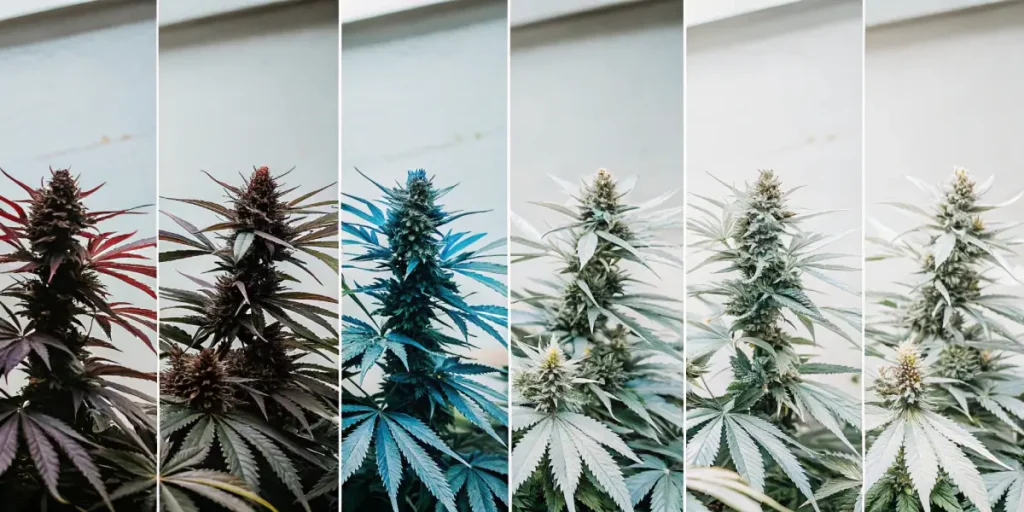
FAQs About Color Change in Cannabis
Can I turn any cannabis plant purple or blue?
No. Only strains with the right genetic profile will produce those pigments. You can enhance color expression with the right environment, but you can’t create it from nothing.
Does cannabis color affect its flavor or effect?
Not directly. The color comes from anthocyanins, which don’t influence cannabinoid content. However, colorful strains often have unique terpene profiles, which can subtly affect aroma and taste.
How do I keep my buds colorful after drying?
Preserve color by curing slowly in the dark, maintaining stable humidity, and avoiding exposure to heat or light. Proper storage is key to long-lasting visual appeal.


